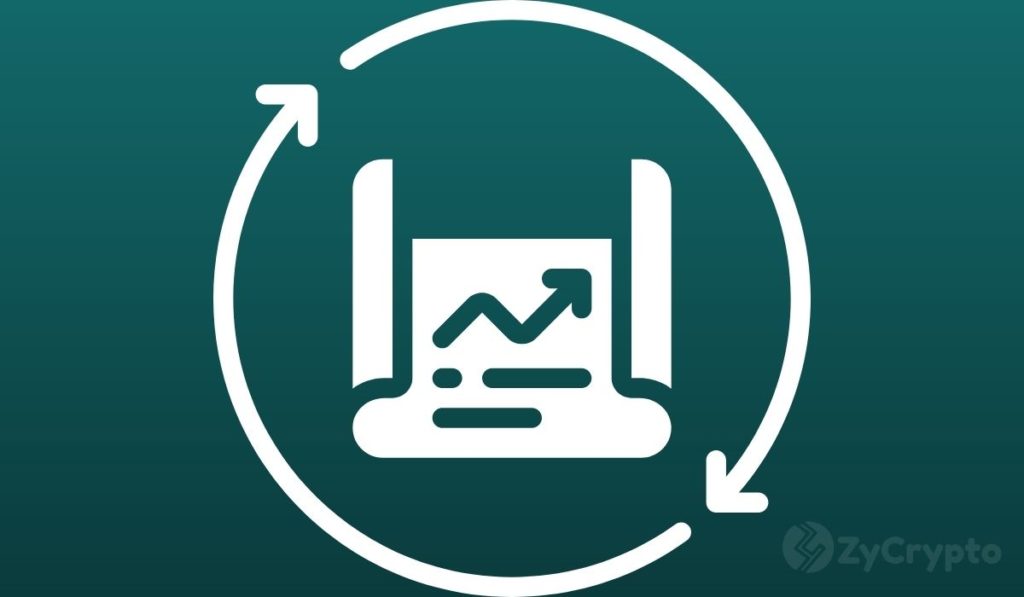2021-3-21 14:19 |
This week, BeInCrypto takes a closer look at on-chain analysis from the perspective of declining BTC supply and the growth of Bitcoin network users. A simple economic calculation, decreasing supply and increasing demand, explains the reasons for the rising price of the main cryptocurrency. The bullish trend is only making it worse.
Additionally, a similar situation seems to take place in Chainlink. The native network token regularly sets new all-time lows (ATL) in the amount of LINK available on exchanges. Explosive price action may follow.
BTC price actionLast week, Bitcoin (BTC) completed its second major correction in this bull market. The price found support in the $ 43,000 area and increased by 44% over the next 13 days. BTC reached the new ATH at $ 61,844.
However, a new all-time high was set over the weekend, with declining volume. The opening of the week brought a decline of 13% and validation of support in the area of $ 53,300.
The daily close, however, did not come below the important support area at $ 55,000, which is the 0.382 Fib retracement of the previous upward move. This signals that the uptrend has a chance to continue and that the near future may bring a new ATH.
Source: Tradingview
BTC volume bars indicate a downtrend (dashed line). This signals a potential breakout in volume at around 70% of this pattern’s fill (orange circle). It may therefore take place around the end of March and the beginning of April. However, the expected increase in volume does not indicate the direction of the upcoming price action.
Drying Bitcoin liquid supplyOn-chain analysis shows that available Bitcoin supply continues to decline. This is reflected in the Liquid Supply Change indicator, which in recent days generated the second largest daily bar of BTC liquidity reduction in over 3 years.
Source: Glassnode
It is also a signal that market newcomers, who recently sold on a drop, still believe that Bitcoin will continue to grow. Glassnode co-creator @Negentropic_ wrote on Twitter that, “Despite recent volatility, #Bitcoin supply is still drying up at astonishing rates for this time around in the cycle.”
In the context of the tremendous shifts in the global economy that has progressed since the COVID-19 crisis in March 2020, it seems that more and more retail and institutional investors are looking for a way out of cash and are using Bitcoin as a hedge. Here we observe the application of Gresham’s law, i.e. the principle that:
“‘Bad money drives out good’. For example, if there are two forms of commodity money in circulation, which are accepted by law as having similar face value, the more valuable commodity will gradually disappear from circulation.”
Moreover, it turns out that this process is only increasing as more and more long-term hodlers are not taking profits now. This is evidenced by the Long-Term Holder Net Position Change indicator, which indicates that far more hodlers were selling at the top of $42,000 (before the 1st correction) than at the next highs of $58,000 (before the 2nd correction) and $61,800 (currently).
Source: Glassnode
Network users increase in numbersOther on-chain analysis charts show a steadily growing number of Bitcoin users. Interestingly, the current increase in new entities is almost at the same level as at the peak of the 2017 cycle, when Bitcoin was hitting $20,000.
Source: Glassnode
However, a comparison with the even earlier BTC cycle, which peaked at the end of 2013, shows that there is still a lot of growth potential. At that time, the daily increase in users slightly exceeded the level of 5,000. Four years later, it already reached almost 35,000. This suggests that at the height of the current cycle, the number of new users may well exceed 100,000 and more.
In this context, a comment by Willy Woo, who posted on Twitter another chart showing the increase in users, is interesting. He claims that if the on-chain data shows 35,000 new participants, the daily adoption of users on exchanges – whose activity does not directly affect the blockchain – could already reach around 100,000 per day.
Pink line: The number of new users seen on the blockchain per day. (30d MA)
35,000 new users per day arriving on-chain. Which means exchanges are likely adopting an additional ~100,000 users per day right now. pic.twitter.com/hMYZtGSfqW
This week we also present on-chain data for Chainlink (LINK), which suggests a very similar situation to Bitcoin. The price action of this altcoin also points to maturing patterns in both price action and declining volume. It can be expected that the end of March will bring increased volatility of the LINK price.
Source: Tradingview
The recent breakout in LINK’s price coincided with Grayscale’s announcement of its launching the Chainlink Trust. On-chain data supports the possibility of bullish price action, as the amount of LINK on exchanges systematically reaches the next all-time lows.
Source: Glassnode
In addition, the Net Transfer Volume from/to Exchanges indicator confirms this. In recent days record high outflows of LINK from exchanges occurred. On February 23 and March 7, the first and third largest token withdrawals in its history took place.
Source: Glassnode
The draining supply, coupled with the growing interest of investors and the dynamic development of the Chainlink network may soon lead to an explosive price action.
The post On-chain Analysis: BTC and LINK Draining from Exchanges appeared first on BeInCrypto.
origin »ChainLink (LINK) на Currencies.ru
|
|











